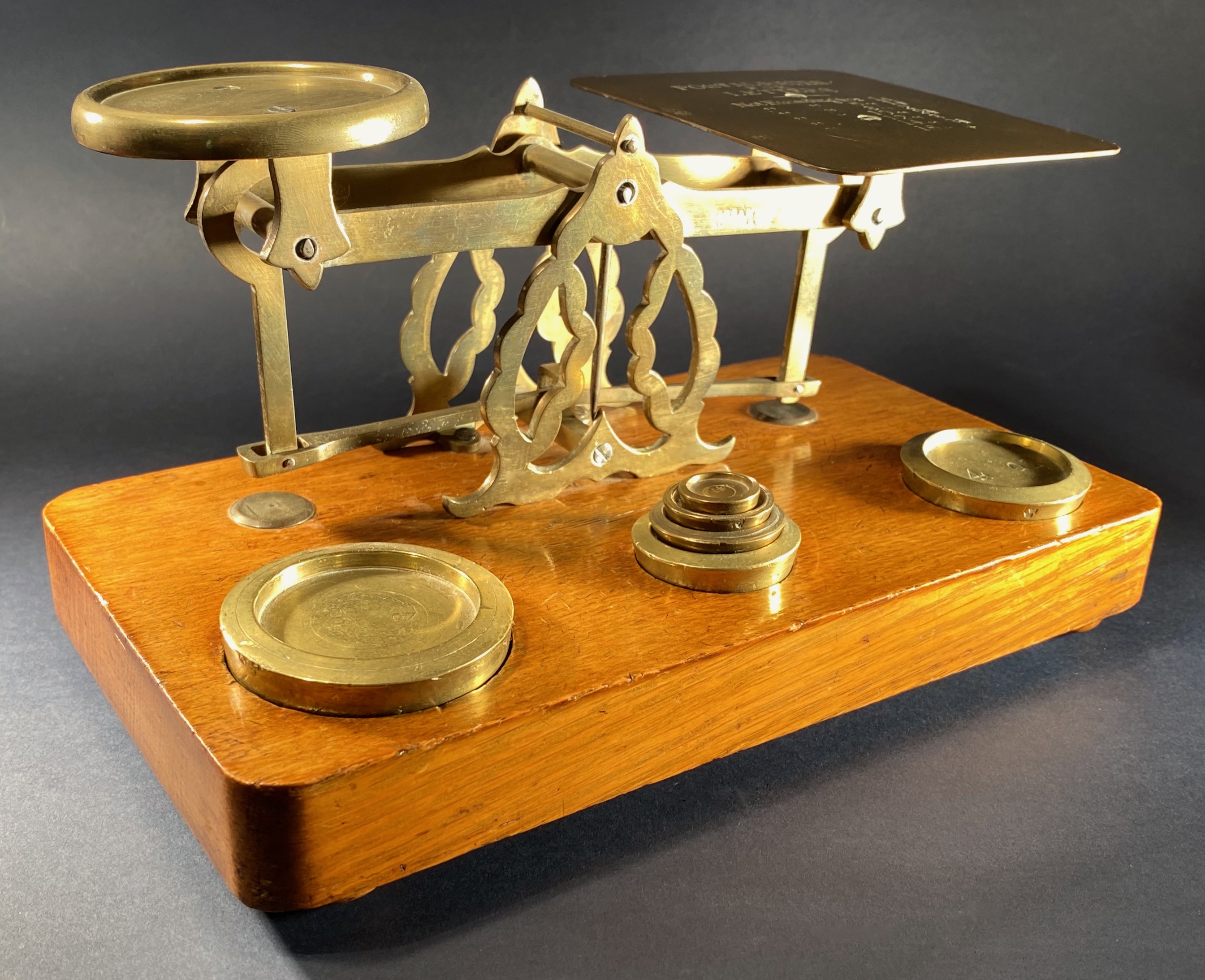

Title: Rare Brass Antique Postal Weighing Mail Letter Scale Tool
Shipping: $29.00
Artist: N/A
Period: 19th Century
History: N/A
Origin: N/A
Condition: N/A
Item Date: N/A
Item ID: 251
Rare Antique Scale from the 1800s. A fully functional little antique brass balance scale with a hardwood antique stand. All of the scale's components and weight sets are all there. A needle indicates when the weights of the two sides' contents are equal.
Some high-end mechanical balances also use dials with counterbalancing masses instead of springs, a hybrid design with some of the accuracy advantages of the poise and beam but the convenience of a dial reading. These designs are expensive to produce and have become largely obsolete due to the advent of electronic balances.
Link: http://en.wikipedia.org/wiki/Scale_(weights_and_measures)
A weighing scale, is a measuring instrument for measuring the weight or mass of an object. A balance compares the unknown weight to a standard weight using a horizontal lever. Weighing scales are used in many industrial and commercial applications, and products from feathers to loaded tractor–trailers are sold by weight. The balance (also balance scale, beam balance and laboratory balance) was the first mass measuring instrument invented. In its traditional form, it consists of a pivoted horizontal lever of equal length arms, called the beam, with a weighing pan, also called scale (hence the term "scales") scalepan, or bason (obsolete) suspended from each arm. The unknown mass is placed in one pan, and standard masses are added to the other pan until the beam is as close to equilibrium as possible. In precision balances, a slider weight is moved along a graduated scale. The slider position gives a fine correction to the weight value. Although a balance technically compares weights, not masses, the weight of an object is proportional to its mass, and the standard weights used with balances are usually labeled in mass units.
Balances are used for precision mass measurement, because unlike spring scales their accuracy is not affected by differences in the local gravity, which can vary by almost 0.5% at different locations on Earth. A change in the strength of the gravitational field caused by moving the balance will not change the measured mass, because the moments of force on either side of the balance beam are affected equally. Very precise measurements are achieved by ensuring that the fulcrum of the beam is essentially friction–free (a knife edge is the traditional solution), by attaching a pointer to the beam which amplifies any deviation from a balance position; and finally by using the lever principle, which allows fractional masses to be applied by movement of a small mass along the measuring arm of the beam, as described above. For greatest accuracy, there needs to be an allowance for the buoyancy in air, whose effect depends on the densities of the masses involved. The original form of a balance consisted of a beam with a fulcrum at its center. For highest accuracy, the fulcrum would consist of a sharp V–shaped pivot seated in a shallower V–shaped bearing. To determine the mass of the object, a combination of reference masses was hung on one end of the beam while the object of unknown mass was hung on the other end. For high precision work, the center beam balance is still one of the most accurate technologies available, and is commonly used for calibrating test weights.